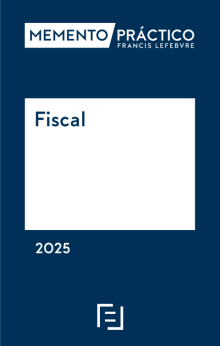
1. Hechos.
La demandante, titular de las marcas de la UE BREEZAIR e ICON, registradas para productos de calefacción y refrigeración, suscribió un contrato de distribución en exclusiva con las demandadas en relación con varios productos BREEZAIR e ICON. Una vez finalizada la relación de distribución, las demandadas continuaron utilizando las marcas BREEZAIR e ICON, a pesar de haber transcurrido los plazos previstos en el contrato de distribución sobre el cese de su uso y de haber sido requeridas por la titular para que cesaran en tales usos. En concreto, los usos que las ex distribuidoras siguieron haciendo de las citadas marcas tenían por objeto no sólo vender el stock sobrante de los productos BREEZAIR e ICON sino además –según alega la demandante- utilizar tal publicidad como señuelo para captar clientela a la que ofrecerían – a propósito de la información solicitada por los clientes sobre los productos BREEZAIR e ICON- productos propios de las demandantes que serían equivalentes a aquellos (como el climatizador evaporativo BIOCOOL). Ante esta situación, la titular de las marcas BREEZAIR e ICON demandó a las distribuidoras por infracción de marca (art. 9.2 RMUE) y, con carácter subsidiario, por competencia desleal por infracción de la cláusula general que impone la buena fe concurrencial (art. 4 LCD).
La sentencia de primera instancia desestimó la demanda, tanto por infracción de marcas como por competencia desleal. El juez de instancia se apoyó en las siguientes consideraciones:
Acción marcaria. En la medida en que los productos comercializados por los ex distribuidores habían sido adquiridos de su titular, que los había comercializado en el EEE, el derecho de marca se habría agotado. Asimismo, el juez apreció que no concurriría la excepción al agotamiento marcario del art. 13.2 RMUE -que invocó la demandante- en relación con el uso publicitario de las ex distribuidores de las marcas BREEZAIR e ICON con el objeto de ofrecer las marcas propias, al entender que dicho uso no provocaría dilución de las marcas de las demandantes ni aprovechamiento de su prestigio.
Acción de competencia desleal. La publicidad por las demandadas de los productos BREEZAIR e ICON junto con el ofrecimiento a los clientes de los productos BIOCOOL propios, en tanto que no excluían la oferta de las marcas de las demandantes, no generaría una imagen distorsionada ni excedería los ámbitos de una diligencia empresarial media.
Frente a esta resolución, la demandante recurrió en apelación. En esencia, el recurso sostuvo que, en relación con la acción marcaria, la sentencia de instancia habría aplicado incorrectamente el principio de agotamiento de marca porque: en primer lugar, las demandadas no habría probado poseer stock de los productos de las marcas de las actoras que estarían publicitando, por lo que no se cumpliría el presupuesto objetivo del agotamiento; y segundo, porque en todo caso, dicho uso no se estaría haciendo conforme a las practicas leales en materia industrial o comercial. Y en lo que se refiere a la acción de competencia desleal, el recurso defendió que la sentencia habría aplicado incorrectamente dicho precepto pues la conducta denunciada no se refería a prácticas comerciales con los consumidores –como erróneamente entendió la sentencia- sino entre profesionales.
2. Pronunciamientos.
La AP de Alicante desestima el recurso interpuesto en su integridad. El pronunciamiento del tribunal se apoya en las siguientes consideraciones:
Acción marcaria. Primero, las demandadas habían acreditado que disponían de stock de los productos de las marcas BREEZAIR e ICON que anunciaban, por lo que se cumpliría el presupuesto objetivo del agotamiento de las marcas. Segundo, no cabría la limitación por vía negocial o contractual del principio de agotamiento marcario. Y, tercero, no cabría incluir dentro del concepto de “motivo legítimo” que justificaría la excepción al agotamiento de la marca en virtud del art. 13.2 RMUE, el concepto de que el uso marcario debe ser conforme a las “prácticas leales en materia industrial o comercial” previsto en el art. 12 RMUE. Este segundo concepto solo se aplicaría para los casos concretos previstos en el art. 12 RMUE (uso del nombre, dirección, indicaciones descriptivas, y uso de marca ajena en relación con accesorios y recambios). Por otra parte, tampoco concurriría “motivo legítimo” para oponerse al agotamiento sobre la base de una supuesta mala fe de las demandadas por hacer un uso publicitario de las marcas, pues el agotamiento de la marca se extiende también a dichos usos.
Acción de competencia desleal. El tribunal examina, en primer lugar, la compatibilidad entre las acciones marcarias y de competencia desleal, a partir de la doctrina de la complementariedad relativa, sentada por el TS en varias sentencias. Esta doctrina sostiene, en esencia, que cabría la aplicación complementaria de la legislación de competencia desleal cuando la conducta denunciada al amparo de dicha legislación no esté cubierta o sancionada por la normativa de propiedad industrial. El tribunal confirma que es posible aplicar la normativa de competencia desleal al caso considerado en tanto que la acción ejercitada al amparo del art.4 LCD estaría dirigida a examinar una conducta “claramente de mercado” y no cubierta por la normativa de marcas; a saber: si la utilización de marcas ajenas - que se tiene derecho a usar desde la perspectiva de marcas- con el objeto de difundir y ofertar los propios productos vulnera objetivamente las exigencias de la buena fe concurrencial.
Pues bien, el tribunal entiende que la conducta de las demandadas tampoco podría prohibirse al amparo de la cláusula general del art. 4 de la LCD que prohíbe conductas objetivamente contrarias a la buena fe. A este respecto, el tribunal considera que la oferta de productos propios con ocasión de la publicidad de marcas ajenas (teniendo derecho a utilizar y publicitar éstas), constituye una estrategia comercial válida siempre que dicha práctica no constituya un aprovechamiento de la reputación ajena ni genere riesgo de confusión respecto de los productos de unas y otras marcas, circunstancias que no concurrirían en el caso examinado.
3. Comentario.
La sentencia resulta interesante desde dos perspectivas: por un lado, desarrolla la interpretación de los “motivos legítimos” que puede invocar el titular de una marca para oponerse al agotamiento de la marca (art. 13.2 RMUE): el titular podrá oponerse no solo cuando “el estado de los productos se haya modificado o alterado tras su comercialización” (motivo expresamente previsto en el precepto) sino también cuando concurran otros “motivos legítimos”, siempre y cuando, eso sí, se justifique que la ulterior comercialización puede generar confusión o implicar un aprovechamiento indebido o menoscabo de su prestigio o notoriedad. Por otro lado, porque confirma la posibilidad de examinar los usos en torno a una marca en el mercado - que se tiene derecho a utilizar según la normativa de marcas- desde la perspectiva de la cláusula general de la LCD (que prohíbe conductas objetivamente contrarias a la buena fe concurrencial).
Se confirma, en todo caso, que la presente sentencia opta por un análisis restrictivo de las dos cuestiones mencionadas. En este caso, tanto la desestimación de la acción marcaria como la desestimación de la acción por competencia desleal parecen responder a un mismo fundamento: favorecer la libre competencia en el contexto del mercado único europeo e impedir que haya operadores que, sobre la base de derechos de exclusiva, puedan provocar una compartimentación artificial de mercados o restringir injustificadamente la libertad de los competidores. Ciertamente, la libre competencia tiene sus límites y una determinada conducta en el mercado podrá ser objeto de prohibición, en particular, si vulnera derechos de exclusiva o infringe las reglas que imponen una competencia leal y honesta. En el caso considerado, sin embargo, a juicio del tribunal, la conducta de las demandadas consistente en publicitar las marcas de las demandantes para ofertar no solo los productos de las demandantes sino también productos propios equivalentes a aquellos, entraría dentro de lo permitido tanto por la normativa de marcas como por la normativa de competencia desleal.
(Fuente de la información: ANUARIO ELZABURU 2016, recopilatorio de comentarios de jurisprudencia europea en materia de Derecho de Propiedad Industrial e Intelectual que realiza Elzaburu).
Documento citado:
-Reglamento (CE ) nº 207/2009 del Consejo , de 26 de febrero de 2009 , sobre la marca de la Unión Europea
-Ley 3/1991, de 10 de enero, de Competencia Desleal.
ENGLISH VERSION
Trademark infringement and unfair competition by a distributor. Judgment of the European Union Trademark Court of 10 October 2016, Breezair (ECLI:ES:APA:2016:2938).
1. Background.
The plaintiff, who holds the EU trademarks BREEZAIR and ICON, registered for heating and refrigerating products, signed an exclusive distribution agreement with the defendants in relation to a number of BREEZAIR and ICON products. Once the distribution agreement had ended, the defendants continued to use the BREEZAIR and ICON trademarks despite the fact that the time limits stipulated in that agreement for ceasing use had expired and that the rightholder had requested the cessation of such use. Specifically, the use that the ex-distributors were continuing to make of the trademarks in question was not just aimed at selling off leftover stock of the BREEZAIR and ICON products but also –according to the plaintiff- at using that publicity to attract clientele to their own “equivalent” products (such as the BIOCOOL evaporative cooler), offered when customers enquired into the plaintiff’s BREEZAIR and ICON products. In view of this situation, the holder of the BREEZAIR and ICON trademarks sued the distributors for trademark infringement (Article 9.2 EUTMR) and, in the alternative, for unfair competition, on the grounds that they had infringed the general clause on good faith with regard to competition (Article 4 of the Spanish Unfair Competition Act).
The complaint was dismissed at first instance in respect of both trademark infringement and unfair competition. The grounds for the dismissal were as follows:
Trademark action. Since the products marketed by the ex-distributors had been acquired from their proprietor, who had placed them on the market in the EEA, the trademark rights had been exhausted. The judge also considered that the exception to the exhaustion of trademark rights laid down in Article 13.2 EUTMR –cited by the plaintiff-, relating to the ex-distributors’ advertising use of the BREEZAIR and ICON trademarks in order to offer their own brands, did not apply, since such use did not dilute the plaintiff’s trademarks or take unfair advantage of their prestige.
Unfair competition action. The defendants’ advertising of the BREEZAIR and ICON products, together with the fact that they were offering customers their own BIOCOOL products, would not lead to a distorted image or exceed the bounds of reasonable professional diligence, since the offering of the plaintiffs’ brands was not excluded.
The plaintiff lodged an appeal against that decision. It essentially held that, in relation to the trademark action, the first instance judgment had incorrectly applied the principle of the exhaustion of trademark rights because, in the first place, the defendants had not demonstrated that they possessed stock of the plaintiff’s brands that they were advertising, and so the objective requirement for exhaustion was not satisfied; and secondly because, in any event, the use in question was not being made in accordance with honest practices in industrial or commercial matters. As regards the unfair competition action, the plaintiff argued that the judgment had incorrectly applied the law, since the infringing conduct did not refer to commercial practices with consumers –as the lower court had mistakenly understood- but rather practices among professionals.
2. Findings.
Alicante Court of Appeal fully dismissed the appeal on the following grounds:
Trademark action. First, the defendants had proven that they held stock of the BREEZAIR and ICON-branded products that they were advertising, and so the objective requirement established for the exhaustion of trademark rights had been satisfied. Second, the principle of exhaustion cannot be limited contractually or by negotiations. Third, the concept whereby trademark use must be made in accordance with “honest practices in industrial or commercial matters”, provided for in Article 12 EUTMR, cannot be included under the concept of “legitimate reasons” that would justify the exception to exhaustion by virtue of Article 13.2 EUTMR. The former would only apply in the specific cases described in Article 12 EUTMR (use of the name, address, descriptive indications, and use of the third-party trademark in relation to accessories or spare parts). The court also considered that there were no “legitimate reasons” for opposing exhaustion on the basis of the defendants’ bad faith in making advertising use of the trademarks, since the exhaustion of trademark rights also extends to such usage.
Unfair competition action. The court first of all examines the compatibility of trademark and unfair competition actions based on the doctrine of relative complementarity established by the Spanish Supreme Court in a number of judgments. This doctrine essentially considers that unfair competition legislation may apply in a supplementary capacity where the conduct deemed to be infringing under that legislation is not covered or penalised under intellectual property laws.The court confirms that unfair competition legislation may apply to the case at hand insofar as the action brought under Article 4 of the Spanish Unfair Competition Act is aimed at examining an issue that is “clearly related to the market” and not covered by trademark legislation, namely: whether the use of third-party trademarks –permitted from a trademark perspective- in order to disseminate and offer one’s own products objectively infringes the requirements of good faith with regard to competition.
The court finds that the defendants’ conduct likewise cannot be prohibited under the general clause constituting Article 4 of the Spanish Unfair Competition Act, which bars conduct that is objectively contrary to the dictates of good faith. In that regard, the court considers that the offering of a company’s own products when advertising third-party brands (which the company is entitled to use and advertise) is a valid commercial strategy, provided that such practice does not take unfair advantage of another’s reputation or give rise to a likelihood of confusion in respect of the parties’ products, circumstances which did not occur in this case.
3. Remarks.
This judgment is interesting from two perspectives. On the one hand, it develops the interpretation of the “legitimate reasons” which may be cited by a trademark holder in order to oppose the exhaustion of its rights (Article 13.2 EUTMR): not only may the rightholder oppose that exhaustion where “the condition of the goods is changed or impaired after they have been put on the market” (a reason that is expressly mentioned in the provision), but also where there are other “legitimate reasons” provided, of course, that it is demonstrated that the subsequent marketing is capable of giving rise to confusion or takes unfair advantage of, or damages, the trademark’s prestige or well-known character. On the other hand, it confirms the possibility of examining the use of a trademark in the marketplace –permitted under trademark legislation- from the perspective of the general clause laid down in the Spanish Unfair Competition Act (which prohibits conduct that is objectively contrary to the dictates of good faith with regard to competition).
This judgment nevertheless opts for a restrictive analysis of the two issues mentioned above. In this case, the same rationale underlies the dismissal of both the trademark action and the unfair competition action: the need to favour free competition in the European Single Market and prevent operators who, based on exclusive rights, could cause artificial compartmentalisation of markets or unjustifiably restrict the freedom of competitors. Free competition certainly has its limits, and specific market conduct could be prohibited, particularly if it infringes exclusive rights or breaches the rules on fair and honest competition. In this case, however, the court finds that the defendants’ conduct, consisting of advertising the plaintiff’s trademarks to offer not just that party’s products but also their own equivalent products, is permitted by both trademark and unfair competition legislation.

Memento Fiscal 2025
- Una obra esencial que contiene el análisis de toda la información fiscal en un solo volumen.
- Incluye ejemplos y soluciones prácticas completadas por más de 24.700 citas a la legislación, jurisprudencia y doctrina administrativa más reciente.
- Primera referencia de consulta para asesores fiscales, directores financieros y para el resto de profesionales relacionados con la fiscalidad.
- La suscripción al Memento Fiscal incluye: - El servicio “Extras Mementos” con el que puedes consultar en cualquier momento si un número marginal del Memento ha sido modificado. - Un servicio de alerta vía e-mail con las novedades que se vayan produciendo cada semana.
- El Memento Fiscal lo tienes disponible también en el siguiente Pack con un precio especial para que domines todas las modificaciones que afectan al conjunto de nuestro sistema fiscal: Pack Memento Fiscal + Memento Express Novedades Tributarias

Curso Actualidad de la facturación electrónica (5ª Ed) (3 sesiones webinars)
¡Un curso esencial sobre facturación electrónica! Analizaremos la nueva versión del Borrador de Reglamento de la factura electrónica y abordaremos las últimas novedades en materia de requisitos de los softwares de facturación y VeriFactu. Asimismo estudiaremos las regulaciones y requisitos específicos relacionados con esta obligación que ha establecido la Ley 18/2022 de creación y crecimiento de empresas, y su Reglamento de desarrollo y te proporcionaremos información sobre las herramientas y tecnologías disponibles para implementar de forma eficiente y segura la facturación electrónica. ¡Prepárate para cumplir con esta nueva obligación legal!
ElDerecho.com no comparte necesariamente ni se responsabiliza de las opiniones expresadas por los autores o colaboradores de esta publicación








